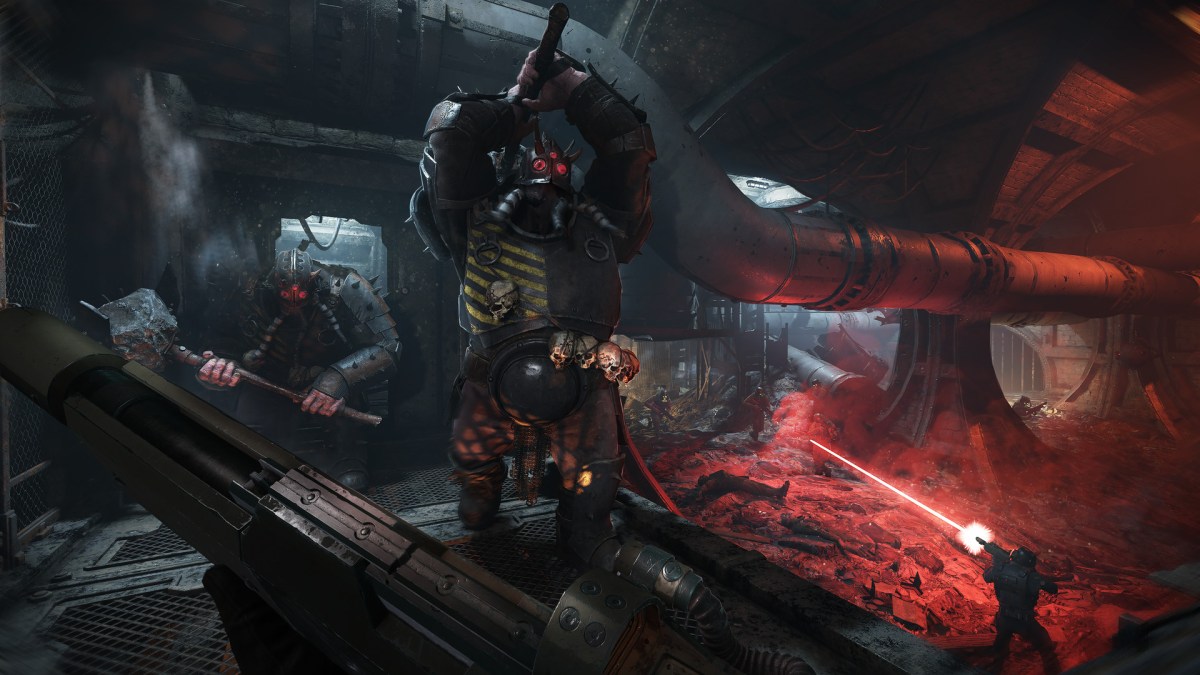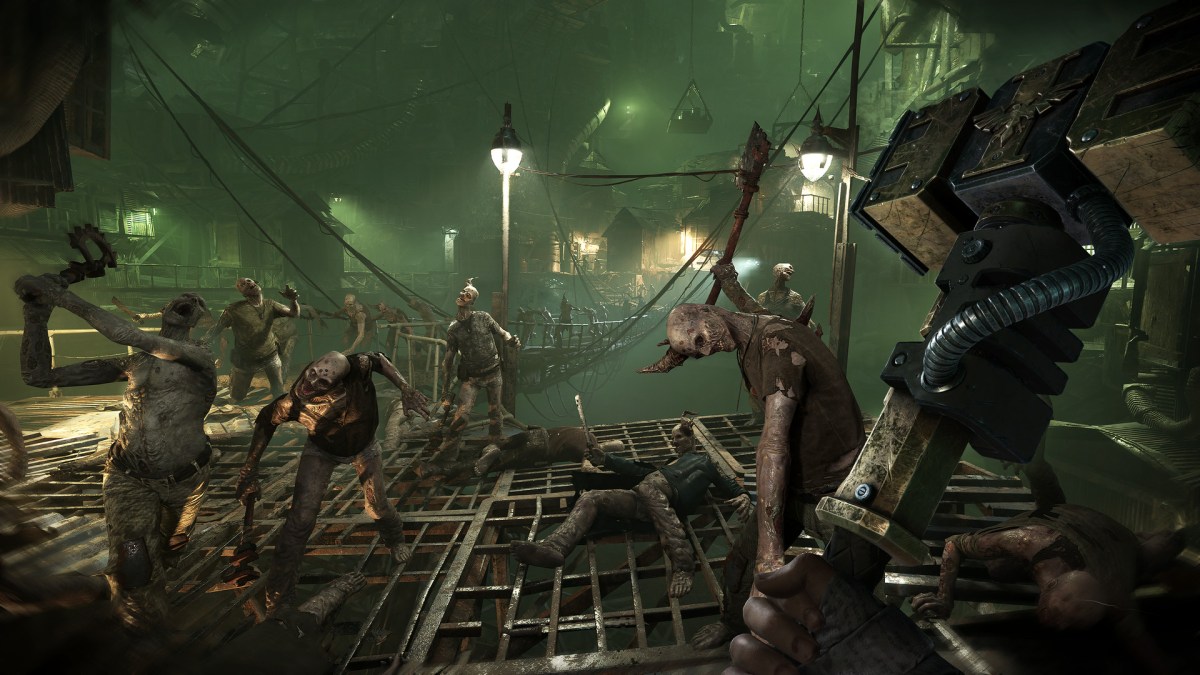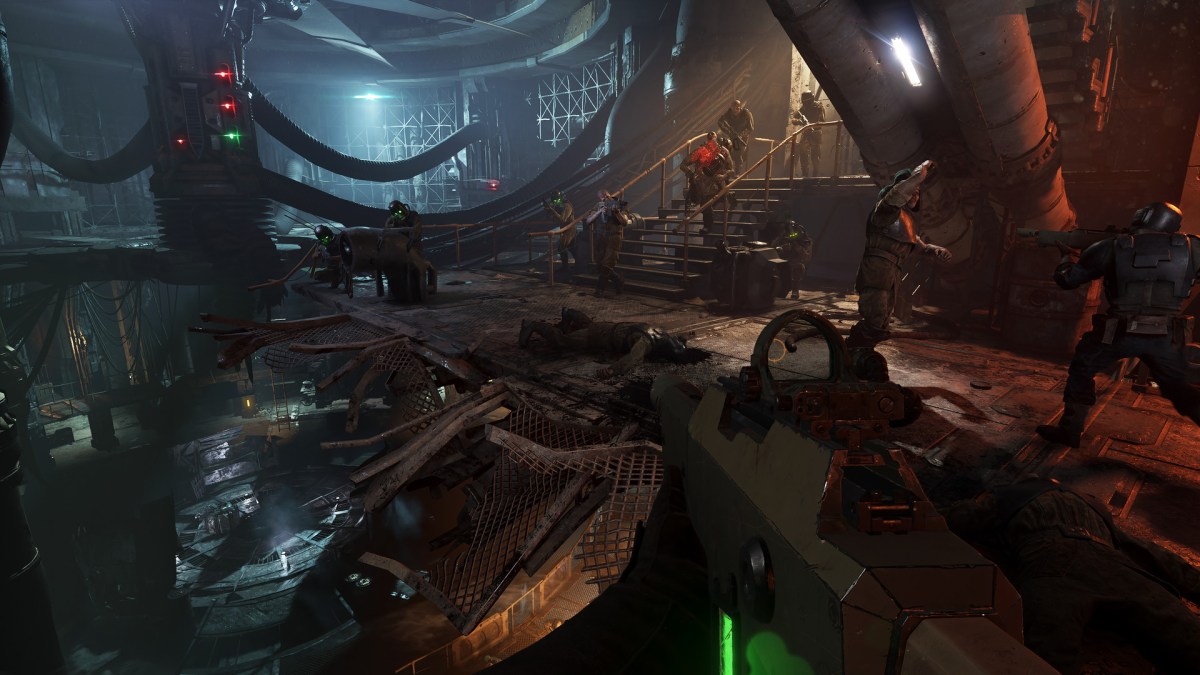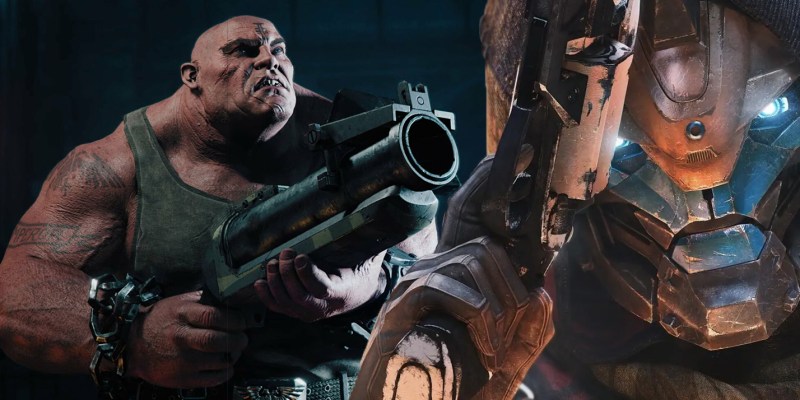It seems silly to write this in 2022, given the size and shape of the franchise, but back in 2014 I bought Destiny for two reasons: Bungie’s proven track record with tight gunplay and what looked to be an intriguing “science fantasy” setting. A month later I stopped playing. The signature gunplay was as satisfying as ever, but I failed to invest in the lore. The generic “light versus dark” mythology couldn’t drag me through Destiny’s loot grinds, incremental endgame, or PvP multiplayer. It’s a shame because back then there was something genuinely fresh about spontaneous PvE events and cooperative play in the context of a first-person shooter.
Although Fatshark is taking some important lessons from Destiny, Warhammer 40,000: Darktide is a very different game. It’s a guns-and-melee successor to the predominantly melee Warhammer: End Times – Vermintide and Vermintide II, which reinterpreted the Left 4 Dead cooperative multiplayer formula. The game is structured around discrete matches rather than open spaces, with players working together to complete a series of objectives. Yet, despite these differences, a weekend with the Darktide closed beta left me satisfied that it might scratch my old Destiny itch when the full game releases on November 30.
It’s uncanny how smoothly Fatshark has transitioned from Vermintide’s melee to Darktide’s guns. Every shot feels weighty and impactful, from the snub-nosed single blast of the ogryn’s shotgun to the pinpoint precision of the sharpshooter’s lasgun. When ammo runs low or things get close and nasty, Vermintide’s visceral melee combat rears its head — or, more precisely, sends heads flying as hordes of enemies pour over the squad of four players. It would be a gory spectacle, were these fights not so frantically paced (and were performance more stable and forgiving to older hardware — something that will hopefully be optimized ahead of release).

The result is messy and ill-suited to anyone chasing a perfect accuracy rating, but it’s grounded, gritty, and immediate. The mission design helps to build this sense of immediacy. The Darktide beta offered only four types of gameplay: repair, strike, raid, and assassination. Although objectives varied, from resetting a coolant system with a wonderfully analogue hacking tool to carrying crates of ammo from a depot, in play the first three modes did not feel that different. They all invited sequenced interaction with the environment while taking cover or moving between positions. Assassinations, meanwhile, culminated in a boss-type encounter to take down the intended target. All four mission types ended with an exhilaratingly panicked extraction back to a dropship or elevator.
In practice, however, the blurred lines between the modes didn’t impact my sense of enjoyment. Each level steadily built up the challenge — a few small gangs of enemies gradually grew into seemingly endless swarms, punctuated by unique enemy types, like snipers, flamethrowers, hounds, and net-casters. Hounds and net-casters could pin a player down. Some enemies would rush in and explode. Others came in slowly but heavily armored. Fall and you could be revived, but at the cost of corruption that shrank your health bar. Fail to get revived in time and you would be taken hostage, while your squadmates were given a chance to rescue you.
Fatshark messes with the conditions of each level. A mission played in complete darkness, with just four tight cones of light from the players’ guns snatching bits of the environment out of the gloom, felt more intimate, intense, and threatening than its illuminated counterpart. Meanwhile, five different difficulty levels ramped the challenge up steadily, requiring greater coordination between the players and better matching of classes on the higher levels.

The Darktide beta offered four character classes: ogryn, sharpshooter, zealot, and psyker. These are roughly equivalent to the tank, sniper, berserker, and support multiplayer archetypes. Each came equipped with a melee and a ranged weapon (which could be upgraded between matches using currency earned from completing objectives), a special ability, a weapon-specific unique attack, a stamina-draining sprint, and in-match consumables, such as grenades, med kits, and ammo packs. Some attacks could be blocked and dodged and enemies could be pushed back, while guns sported iron sights and a quick melee.
In other words, the Warhammer 40,000: Darktide beta did not feel like a far cry from Destiny, or indeed many other shooters that offer PvE. And as with Destiny, I might expect to bounce off it once the thrill of the gameplay gets old. Except that there is one key difference maker – the Warhammer 40K setting. While it’s not necessary to pay attention to any of the story or wider lore, Fatshark makes the most of it here, doing its best to invest the player in the Warhammer 40K universe from the outset.
The Darktide beta opened with a robust character creator that offered not just cosmetic options, but a choice of backstory for your avatar. Are you a zealot from a cramped city sentenced for heresy or an ogryn miner with a penchant for petty criminality, for example? Were you in a terrible work accident, or did you witness a massacre that scarred you for life? These and many other choices are a roleplaying trick to invest you in your character before they are dropped in a small social space, a kind of gothic equivalent of Destiny’s old Tower and similar to the space available in Necromunda: Hired Gun.

Meanwhile, the missions benefitted from the cramped and heavily industrialized gothic setting of a Warhammer 40K hive city. Claustrophobic runs through sewage and access tunnels open up to vast hangars, smelters, and cathedrals. Tightly wound bridges, walkways, and staircases make for perilous higher ground and dangerous sniper’s nests. It’s an unashamedly grimdark atmosphere, but one that’s never po-faced. Mission briefings are delivered with a gloriously camp seriousness, characters periodically shout out silly taunts and one-liners, and many consumables wouldn’t be out of place in The Rocky Horror Picture Show.
There is a sense in which Fatshark’s advantage here is unfair. Bungie had to build a new universe for its shooter, while the Games Workshop IP has been going for over 30 years and boasts a staggeringly large and often surprisingly bizarre expanded universe. In another sense, however, Fatshark must ensure that it stays true to that expanded universe — no mean feat, given there are at least a couple dozen novels and stories set in hive cities alone.
It looks like it may well pay off. Even if I might get tired of rinsing the same mission types after a few weeks, I think I will stick around for the atmosphere. Unlike Destiny, which took itself far too seriously when it released, Darktide seems to know how to balance the squalor of its setting with the campier side of its vast and intricate source material.
